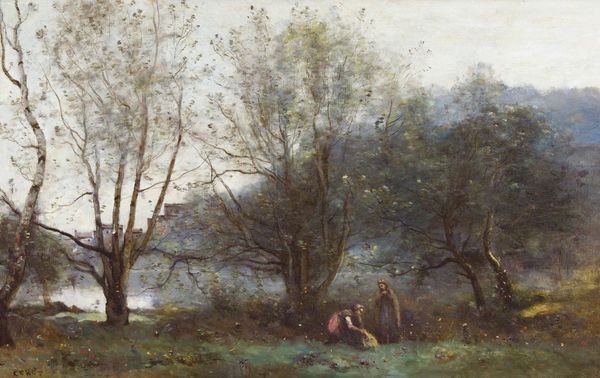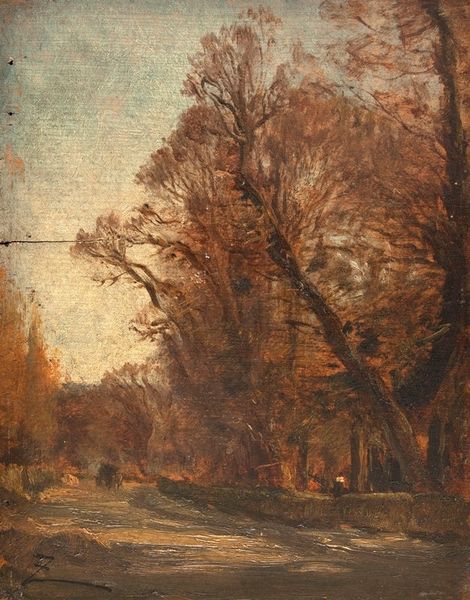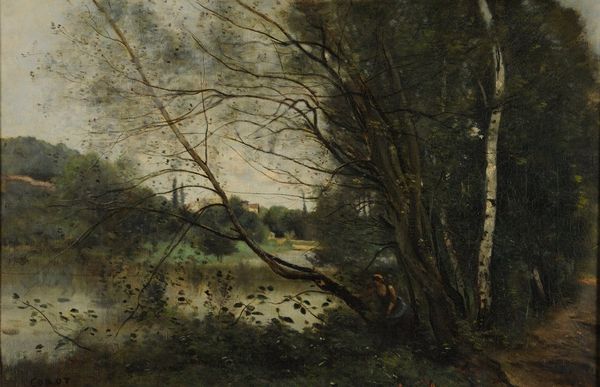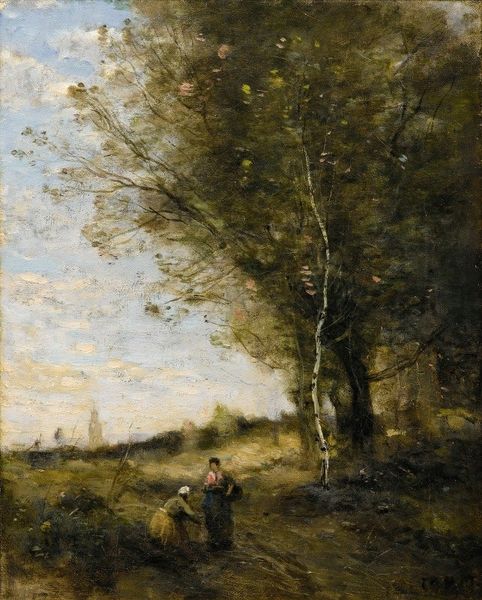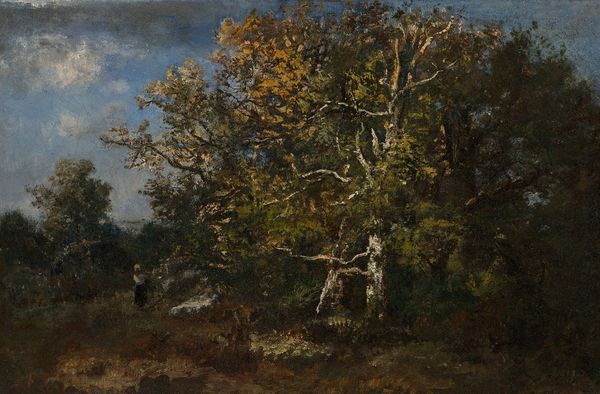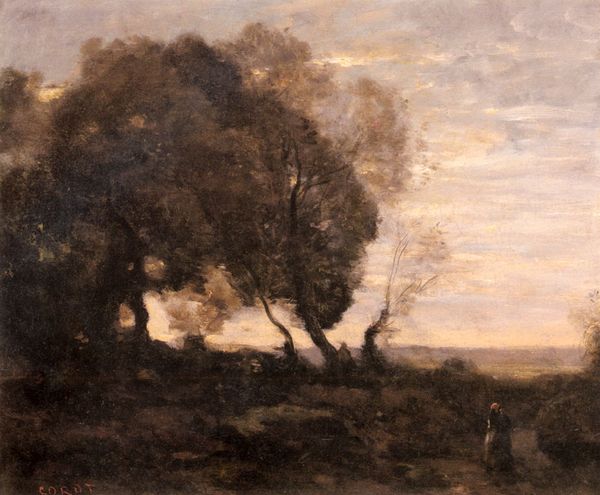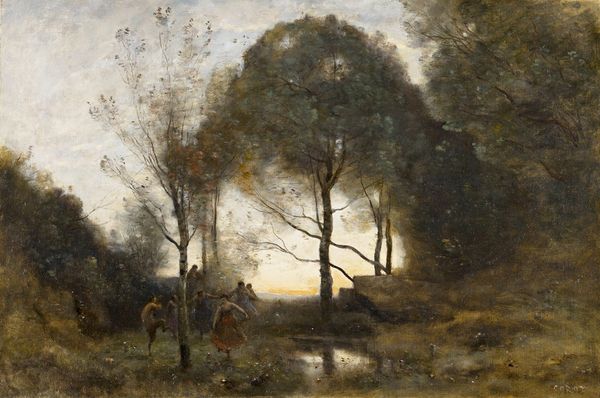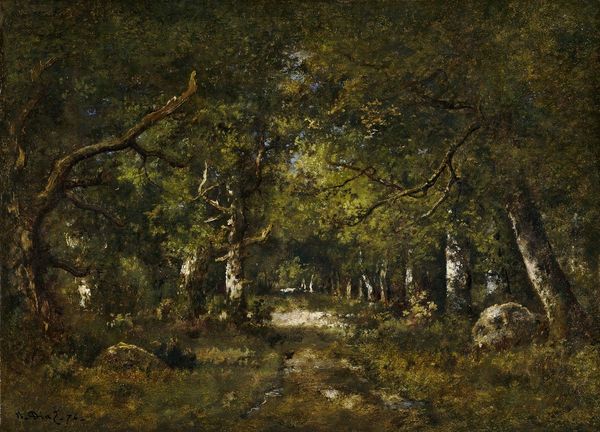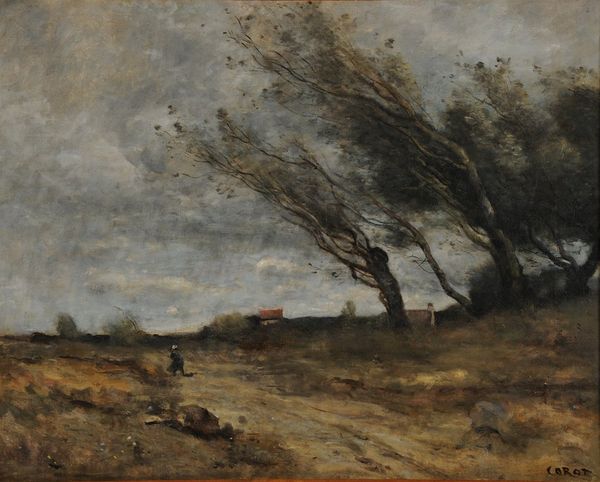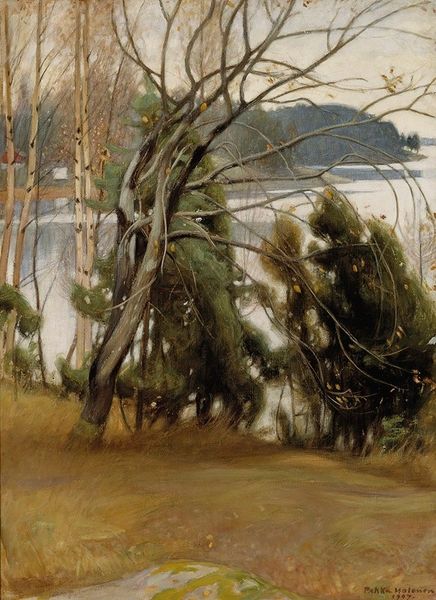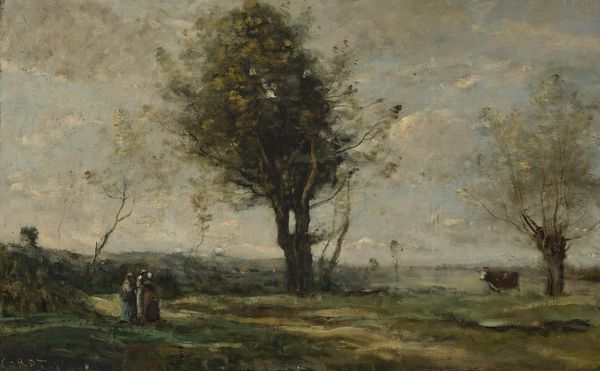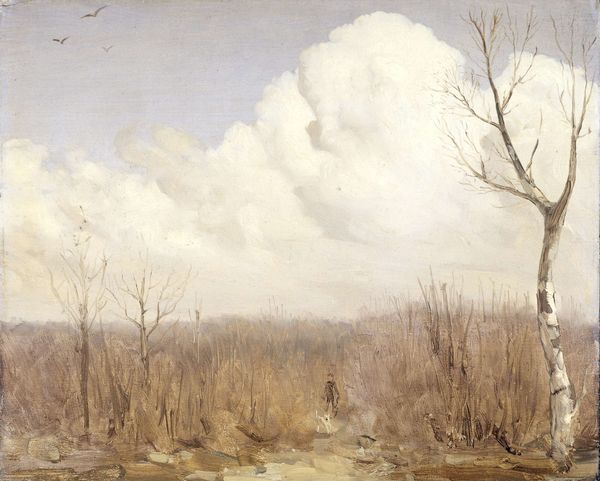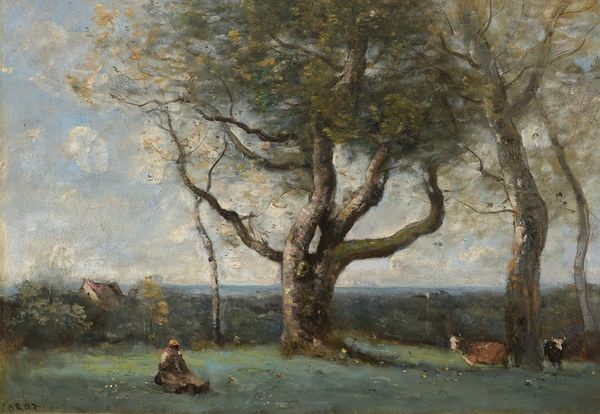
Copyright: Public Domain: Artvee
Editor: We're looking at Gustave Courbet's "Winter Landscape," painted sometime between 1850 and 1877, using oil paints. It's a really somber scene, the palette is quite muted. How do you interpret this work within its historical context? Curator: Considering the era, Courbet's unflinching realism was revolutionary. It challenged the romanticized visions of nature, refusing to prettify or idealize. Think about the socio-political landscape of France during that time - a period of upheaval and revolution. This painting becomes a visual manifestation of those struggles, mirroring the stark realities faced by ordinary people. Where do you see that reality reflected in the work? Editor: Perhaps it's the barren trees, or the lack of vibrant color, suggesting hardship and resilience in the face of harsh conditions. Curator: Exactly. Courbet was committed to depicting the lives of the working class. His landscapes often carry a sense of social consciousness, reflecting the plight of those connected to the land. One might also analyze the role of the lone tree—it is centered and the focal point of the composition. We could consider this an individual or even symbolic of France and the enduring power or the struggle it currently faced at the time it was painted. How might viewing Courbet's landscapes through a feminist lens change our understanding of this image? Editor: That's a fascinating angle. Maybe seeing the landscape as traditionally feminine - as nature, the body - and noting Courbet's deliberate rejection of idealization could be interpreted as a commentary on societal expectations placed upon women. Curator: Precisely. It invites a deconstruction of conventional artistic representations and offers space to explore the complex interplay between art, identity, and societal norms. Editor: I’ve never considered landscape art this way before, that it could invite so many interpretations through political and feminist theories. It really encourages me to rethink what I understood about this painting. Curator: Absolutely. It’s about recognizing the multiple layers of meaning embedded in the art object.
Comments
No comments
Be the first to comment and join the conversation on the ultimate creative platform.
